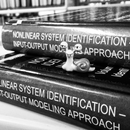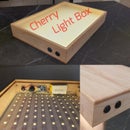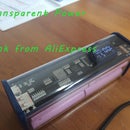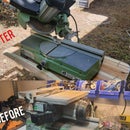Introduction: Outdoor 3D Printed Coffee Pot
Do you remember this one?
It was my first attempt to make a portable-battery-operated-cool-coffee-moka pot :)
And it was a success, I still make my office coffee with that one and it still functions very well. But, there is a feeling of prototyping with it, it was somehow a trying in that area to see if the concept works. It works! Now it's time to make it more available to any one who wants to repeat it.
So, let's begin!
You might think: 3D Printed? With hot coffee? This guy must be crazy! Stick with me for a while, it is actually pretty cool.
Now, why 3D printed? It's obvious - it is available, repeatable, cheap. Why not? Well, PLA is not really heat friendly material...
But, there is a solution, they have been doing this in the military for ages. We will simply use cork to shield the PLA from the heat generated during coffee boiling :)
Now, let's really begin!
Side note: Some pictures feature an early version of parts with 3 bolts. The process is similar so I left them. The final parts use 4 bolts.
Step 1: What Is Your Size?
I'm not getting personal here. You simply have to decide what size of coffee pot you are going to make.
My first one was for 1 cup espresso. This time I wanted something bigger, so I opted for a 4 cup model. But really, this is up to you.
Just a side note, these new round ones are much easier to work with than the classic pentagons.
Step 2: Model It
Now that you have your cool coffee pot, you need to model it in some kind of CAD program. I'm using Fusion 360, which is simply great and free, you should try it.
Now you will want to get the outer dimensions of the lower part of the pot, after all this is where your heat elements and the battery will go. Your daily caliper or simply a ruler will be your best friends here.
Step 3: Expand It and Add Some Features
Now, that we have the dimensions, we will generate the model with the offset feature. You should include room for the cork sheet (I used ~5mm thickness, found it in Walmart for ~5$=4 sheets) and the actual material wall to support all of this.
Make sure you leave enough room for the pressure valve (not too high).
Don't forget the room for a connector and the cables routing through the floor. I'm using a XT60 connector. Initially it was the one I used previously but there is much cooler reason, will talk about this later :).
Add some "ears" for the bolts.
Now it's time to cut your model into two parts - lower and upper. It is a good idea to leave a gap between them for the purpose of tightening the whole structure on the coffee pot. If it sits flush, there is no room for the pretension.
My model is done around 4 #10 bolts, XT60 connector and 5mm cork. But you can go crazy with your design.
Step 4: Print It
This is the easy part.
The files are the updated version which was eventually realized.
Worked really good with 0.2mm layer, 10% infill.
Step 5: Prep the "floor"
The parts are ready, you have your cork, your coffee pot and your heat element.
This time I wanted something more powerful, so I opted for this ceramic one. It is also more compact and round, which suits for the current application.
Cut a round piece of cork to size and make two slits for the wires of the heat element.
Feed the wires through the channel and solder the connector.
Dry fit everything and generously apply the thermal paste on top the heat element.
The base of the coffee pot has an undercut in the middle (see pictures), where the heat element fits right in flush.
Position the bottom part on the cork and the lower printed part.
Step 6: Stuff the Cork
Put on the upper part and begin inserting cork strips through the whole perimeter, between the pot and the PLA wall.
Make sure everything is fitted tight and there are no "corkless" areas.
If you do this step right, the upper part should be slightly in the air, perfect for you to use the bolts for pretension the whole thing.
You are basically done. Add a final strip of cork on the perimeter, make it slightly proud out of the PLA wall.
Put a drop of CA to secure the connector (the fit is really tight).
Now, you are ready to make your coffee.
Step 7: Make Your Coffee
Now you have your own coffee pot. You can take it anywhere and enjoy freshly made espresso.
It also looks cool and clean!
The whole thing operates from 4s-6s LiPo/LiIon battery.
Also from a power supply at home.
The more voltage, the faster you boil the water!
Note that during the whole process, the outside temperature rarely goes above body temperature, in the picture 37.1 deg C ~ 98.6 deg F. This is perfectly safe and does not ruin your PLA parts.
Enjoy,
Dani

Participated in the
Outside Contest 2017















